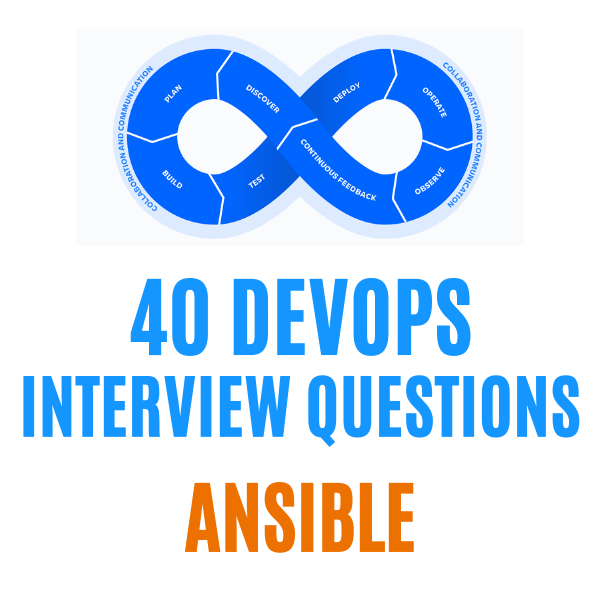
Basic Concepts (10 Questions)
- What is Ansible, and what makes it different from other configuration management tools like Chef or Puppet?
- What are the key benefits of using Ansible in DevOps practices?
- Explain the concept of modules in Ansible and their role in automation tasks.
- What are playbooks in Ansible, and how do they structure automation workflows?
- What is the difference between inventory and inventory files in Ansible?
- Explain the difference between agent-based and agentless configuration management tools.
- What are Ansible facts, and how are they used in playbooks?
- Describe the role of Jinja2 templating in Ansible and its benefits.
- How can you leverage Ansible Vault for secure storage of sensitive information?
- What are some common Ansible modules you’ve used or come across?
Inventory Management (6 Questions)
- Describe various methods for managing server inventories in Ansible (e.g., static, dynamic, cloud-based).
- How can you use groups and variables to organize and customize your inventory in Ansible?
- What are some best practices for securing your inventory files and access control?
- Explain how you would integrate Ansible with cloud platforms like AWS or Azure for managing inventories.
- How can you utilize dynamic inventory sources like DNS or REST APIs to manage evolving infrastructure?
- Describe your approach to version control and maintaining changes to your Ansible inventories.
Playbook Execution and Troubleshooting (8 Questions)
- Explain the different ways to run Ansible playbooks (e.g., manually, scheduled, triggered).
- How do you handle conditional tasks and branching logic within playbooks?
- Describe common troubleshooting techniques for identifying and resolving errors during playbook execution.
- What tools or resources are available for debugging and monitoring Ansible playbooks?
- What are the different verbosity levels available in Ansible, and how do they aid in debugging?
- How would you go about debugging a complex playbook with multiple tasks and conditionals?
- Explain the purpose and usage of Ansible tags for playbook execution control.
- What are some strategies for handling failures and retries during playbook execution?
Modules and Variables (8 Questions)
- How do you find information about available Ansible modules and their usage details?
- Explain the use of variables in Ansible playbooks and their benefits in reusability and flexibility.
- How can you create custom modules to extend Ansible’s functionality for specific needs?
- What are best practices for managing sensitive data and secrets within Ansible variables?
- Describe the use of filters in Ansible variables for data manipulation.
- How can you create complex data structures like nested dictionaries or lists using Ansible variables?
- Explain the concept of conditional facts and their application in playbooks.
- Compare and contrast different approaches to managing variables across environments (e.g., group vars, host vars).
Advanced Concepts (8 Questions)
- How can you leverage roles in Ansible to modularize and share automation tasks across projects?
- Explain the integration of Ansible with CI/CD pipelines for continuous delivery.
- What are some security considerations when using Ansible in production environments?
- Describe your understanding of Infrastructure as Code (IaC) and its connection to Ansible.
- How can you utilize Ansible Galaxy for sharing and discovering reusable roles and modules?
- Explain the concept of Ansible collections and their advantages.
- Describe your understanding of the Ansible Control Machine and its purpose.
- How can you integrate Ansible with monitoring tools for gathering insights into infrastructure health?
Hope you find this post helpful.
Telegram: https://t.me/LearnDevOpsForFree
Twitter: https://twitter.com/techyoutbe
Youtube: https://www.youtube.com/@T3Ptech